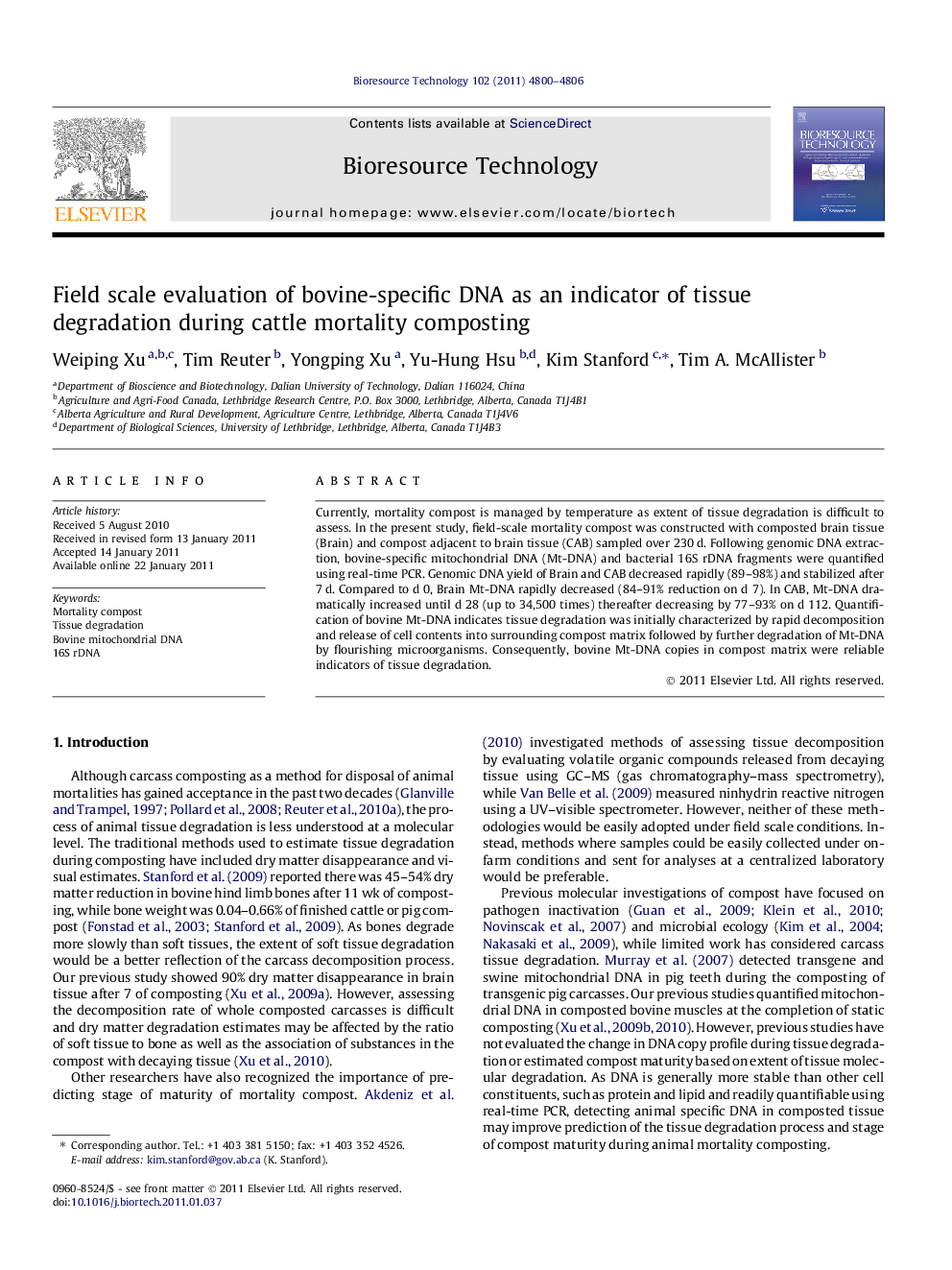| Article ID | Journal | Published Year | Pages | File Type |
|---|---|---|---|---|
| 10395198 | Bioresource Technology | 2011 | 7 Pages |
Abstract
Currently, mortality compost is managed by temperature as extent of tissue degradation is difficult to assess. In the present study, field-scale mortality compost was constructed with composted brain tissue (Brain) and compost adjacent to brain tissue (CAB) sampled over 230Â d. Following genomic DNA extraction, bovine-specific mitochondrial DNA (Mt-DNA) and bacterial 16S rDNA fragments were quantified using real-time PCR. Genomic DNA yield of Brain and CAB decreased rapidly (89-98%) and stabilized after 7Â d. Compared to d 0, Brain Mt-DNA rapidly decreased (84-91% reduction on d 7). In CAB, Mt-DNA dramatically increased until d 28 (up to 34,500 times) thereafter decreasing by 77-93% on d 112. Quantification of bovine Mt-DNA indicates tissue degradation was initially characterized by rapid decomposition and release of cell contents into surrounding compost matrix followed by further degradation of Mt-DNA by flourishing microorganisms. Consequently, bovine Mt-DNA copies in compost matrix were reliable indicators of tissue degradation.
Keywords
Related Topics
Physical Sciences and Engineering
Chemical Engineering
Process Chemistry and Technology
Authors
Weiping Xu, Tim Reuter, Yongping Xu, Yu-Hung Hsu, Kim Stanford, Tim A. McAllister,
